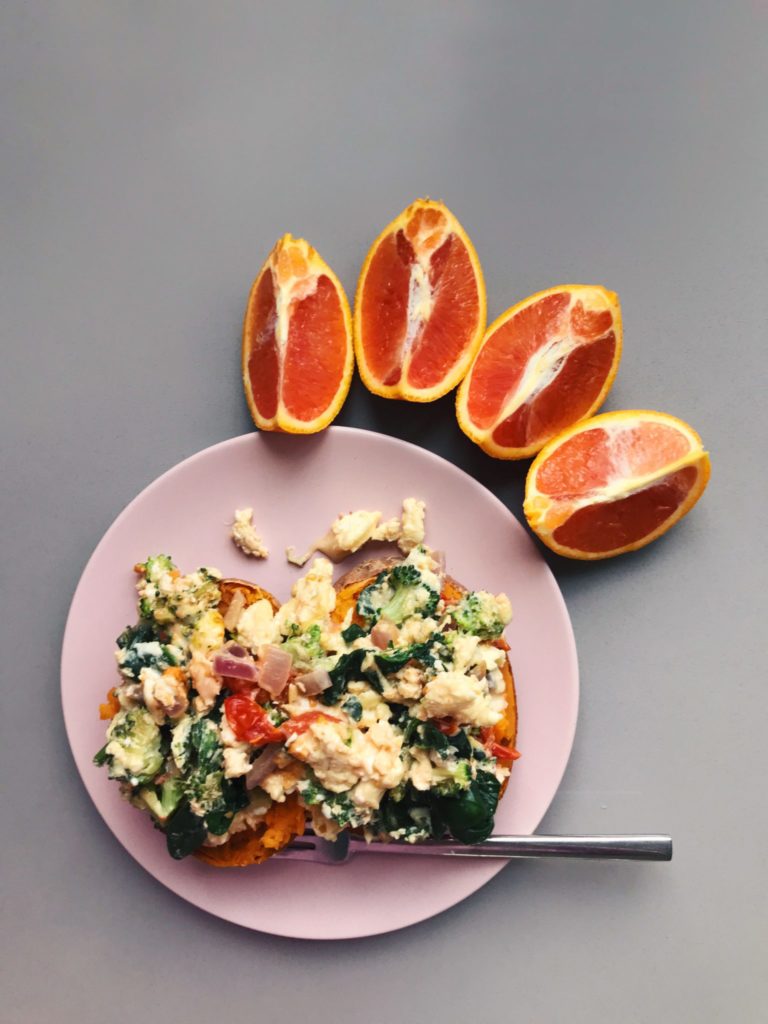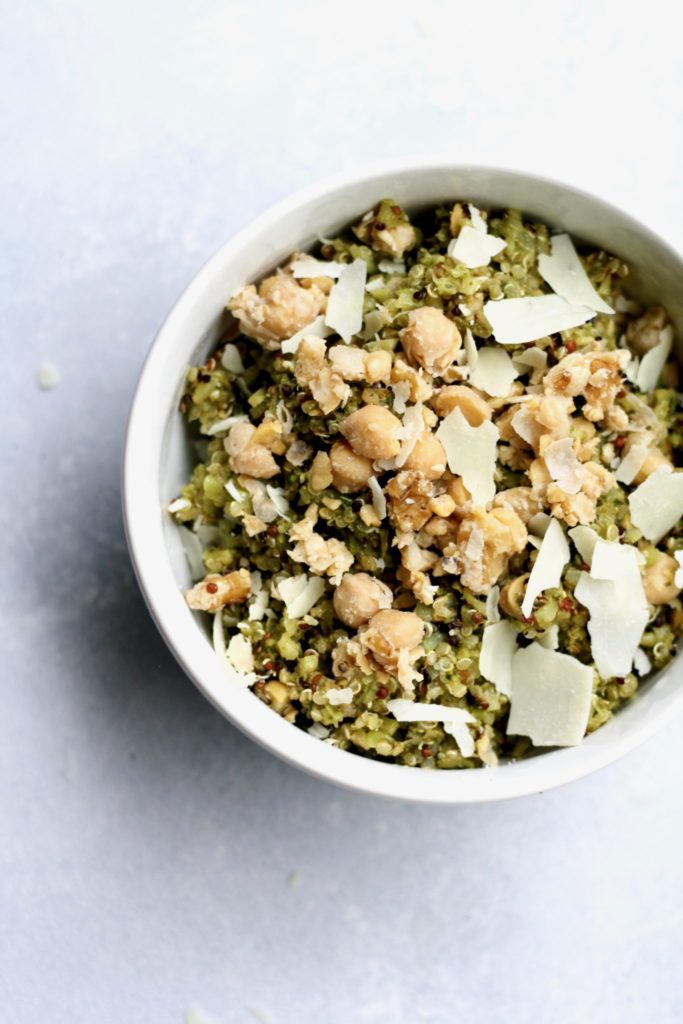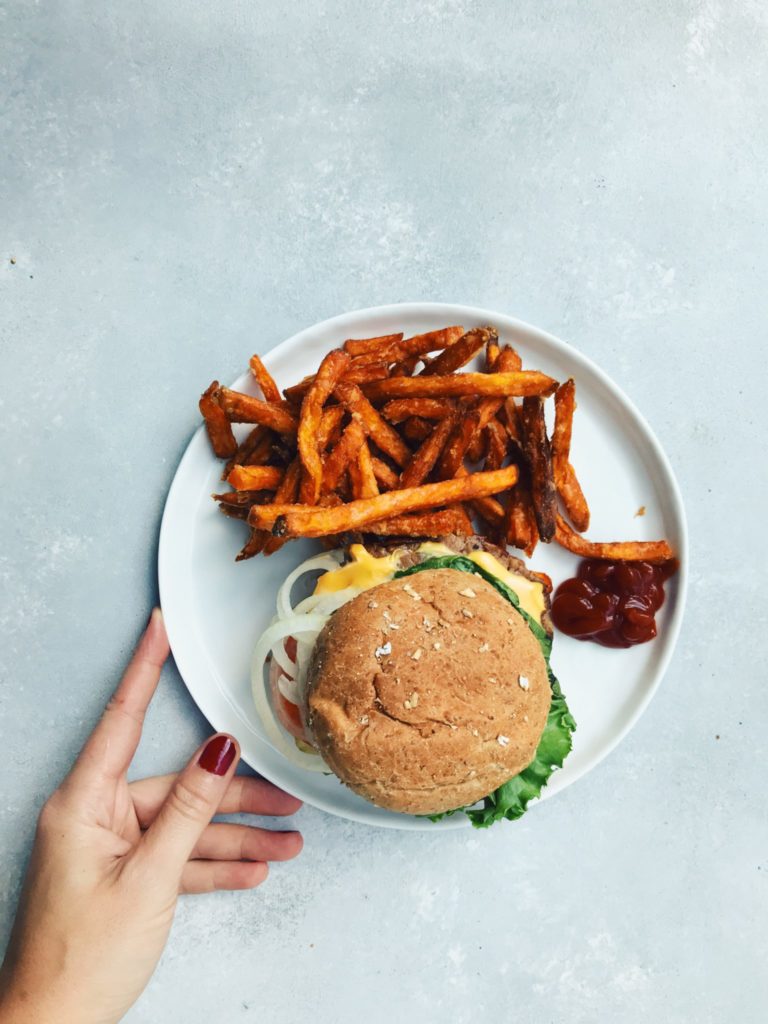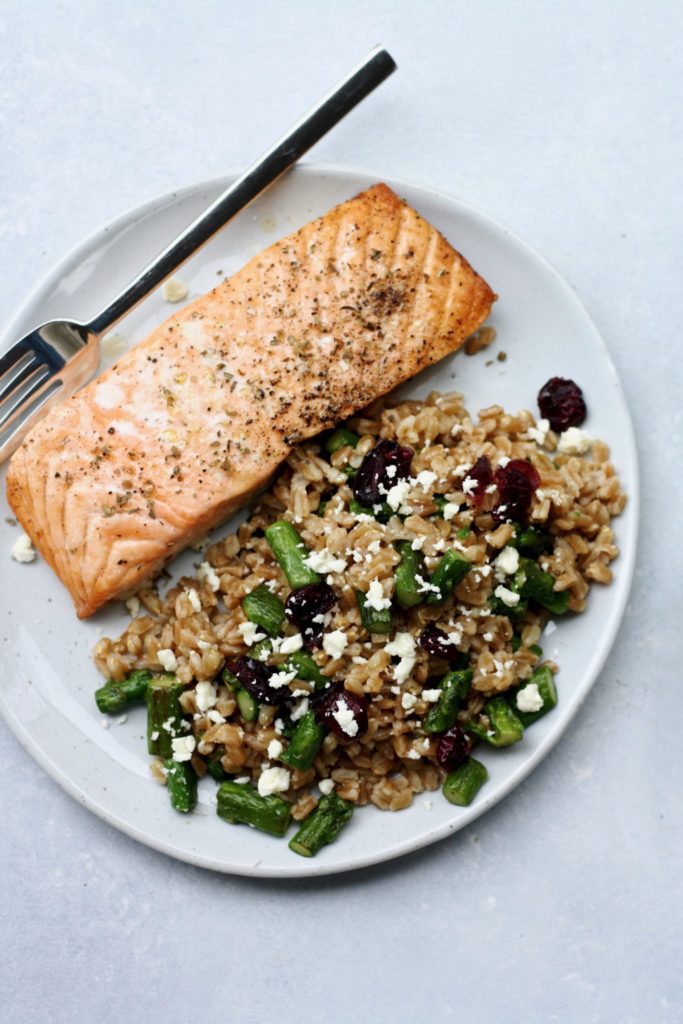
Since I wrote a post covering nutrition during pregnancy, I wanted to follow that up with a post covering the role of nutrition after pregnancy!
Nutrition during and after pregnancy are both important, but they do differ in some ways, especially if you’re breastfeeding. While some of the highlighted nutrients may be the same, many nutrients serve different roles post-pregnancy than they did during pregnancy. If you’re a breastfeeding mom, the nutrients you consume not only benefit you but also your baby.
In fact, there are several vitamins and minerals whose concentration in milk is highly dependent on the mother’s diet, which is why it’s important to focus on fueling properly.
While I always recommend a whole food approach to nutrition, I know it’s easier said than done when you’re dealing with a newborn and adjusting to a whole different way of life. Often, feeding yourself can be last on your mind, which can result in an overall lack of nutrition. Talk to your OB about whether or not it makes sense to continue your prenatal supplement while breastfeeding. Doing so can help a sleep-deprived breastfeeding mom provide for herself while also supporting baby’s growth and development.
There are seven nutrients that are dependent on maternal intake (or stores) in order for the baby to receive what it needs via breastmilk. These are: vitamin A, thiamin, vitamin B6, riboflavin, vitamin B12, iodine and selenium. The good news is that in the case of a deficiency, concentration of these nutrients in milk can be restored quickly with supplementation if necessary.

Vitamin A
Vitamin A plays many roles in the body including aiding in immune function, vision, reproduction, and cellular communication. It is critical for vision and supports cell growth and differentiation, making it important for formation and maintenance of the heart, lungs, kidneys, and other organs. For these reasons, vitamin A is critical for a baby’s optimal health, growth, and development. As a result, vitamin A requirements for moms are highest during lactation as they are providing not only for themselves but for their babies as well. You can find vitamin A in a variety of foods including beef liver and other organ meats, fish such as salmon, green leafy vegetables and other green, orange, and yellow-hued vegetables, fruit such as cantaloupe and mangos, dairy products and fortified cereals.
Vitamin A-Rich Meal Idea: Try veggie scrambled eggs stuffed inside a roasted sweet potato
Thiamin
Thiamin plays a critical role in energy metabolism making it another important factor in growth, development, and cell function for both mother and baby. Thiamin is vital for maintaining a healthy nervous system and aiding muscle contraction. It also helps our bodies maintain electrolyte balance and converts carbohydrates into our body’s usable form of energy (glucose). The recommended dietary allowance is highest in women who are breastfeeding since low maternal status can result in low content in breastmilk. Thiamin is present in whole grains and fortified bread, cereal, pasta, and rice, meat (especially pork), fish, legumes (such as black beans and soybeans), seeds, and nuts.
Thiamin-Rich Meal Idea: Try brown rice & pork stir-fry with edamame and mixed vegetables

Vitamin B6
Vitamin B6 is another critical nutrient for lactating moms as it is a necessary cofactor in over 140 enzymatic reactions within the body. While it is primarily involved in the metabolism of amino acids (the building blocks of protein), it also aids in the metabolism of carbohydrate and fat molecules. This vitamin is important for optimal function of the nervous system and helps with cognitive development, immune system function and hemoglobin formation (a protein responsible for transporting oxygen in the blood) in both mother and baby. The RDA while breastfeeding is 2mg/day (as opposed to 1.2-1.3mg/day for non-breastfeeding females). You can find vitamin B6 in fortified cereals, beef & poultry, starchy vegetables, and some non-citrus fruits.
This nutrient is very important for the baby’s cognitive development and immunity. If you feel you might not be meeting your need for vitamin B6 through food alone, you’ll want to talk to your doctor about incorporating a supplement.
Vitamin B6-Rich Meal Idea: Try a chickpea, bulgur and spinach salad with avocado
Riboflavin
Riboflavin is an essential component of two major coenzymes that aid in things like energy production, cellular function, growth, development and metabolism of fats. Riboflavin also helps maintain normal levels of homocysteine, an amino acid in the blood. Given that riboflavin is water-soluble, we cannot maintain large stores within our body to rely on when we need it. Therefore, it’s important that the diet of a breastfeeding mother contains at least 1.6mg/day (about 0.6mg/day more than when not lactating) to ensure both mother and baby get what they need. Riboflavin is present in eggs, meat, and dairy products, green vegetables and fortified cereals.
Riboflavin-Rich Meal Idea: Try an egg and cheese sandwich with a glass of milk

Vitamin B12
Vitamin B12 is a critical nutrient for both mom and baby as it plays many roles in the body. It aids in red blood cell formation, neurological function, and the synthesis of DNA (the genetic material in all cells). Adequate intake of vitamin B12 also helps prevent a type of anemia that can leave you feeling tired or weak (something you don’t want to be struggling with on top of being a new parent!). During lactation, the recommended daily allowance increases from 2.4mcg/day to 2.8mcg/day. Vitamin B12 is found in animal products (such as fish, meat, poultry, eggs, milk & milk products) and fortified cereals.
Vitamin B12-Rich Meal Idea: Try a turkey burger with cheese on a whole grain bun and a side salad (or some sweet potato fries for additional Vitamin A!)
Iodine
The body relies on iodine to make thyroid hormones, which play important regulatory roles such as protein synthesis, enzymatic and metabolic activity. The body also relies on these hormones for development of a baby’s bones and brain. It’s recommended that a woman who is nursing consume 290 mcg/day of iodine per day (about 50% more than when not breastfeeding). Whole food sources of iodine include fish (such as cod and tuna), seaweed, shrimp, dairy products and grains. However, given the large increase necessary during nursing, it’s also a good idea to talk to your doctor about whether they recommend supplementation.
Iodine-Rich Meal Idea: Try dried seaweed as a snack or in place of chips as seaweed (particularly kelp) is an incredibly rich source of iodine

Selenium
Selenium plays a critical role in many body processes including reproduction, DNA synthesis, thyroid hormone metabolism and protection from oxidative damage and infection for both mother and baby. Therefore, it’s very important (especially as a breastfeeding mother) to consume the recommended daily allowance of 70 mcg (up from 55 mcg/day when not breastfeeding).* You can find selenium in meat, poultry, fish, eggs, cereals, grains, and dairy products.
Selenium-Rich Meal Idea: Try baked halibut or salmon over brown rice with sautéed spinach
I hope all the new moms out there find this useful! Sometimes understanding the reason behind the need (and having an example meal) provides a little more motivation to pull something together (even when you feel like it’s the last thing you have energy for!). And of course, as I mentioned in my post discussing the nutrition during pregnancy, all nutrients are important. I just chose to highlight the seven above given the large increase recommended in order to meet the needs of both mom and baby during lactation.
And again, if cooking for yourself or putting a meal together feels like it’s just too much, don’t stress (you’ve got enough of that to be stressed about as is!). In that case, I would just recommend chatting with your doctor about incorporating a supplement if you’re worried you’re falling short from food alone.
*Source: U.S. Department of Agriculture, Agricultural Research Service. USDA National Nutrient Database for Standard Reference, Release 25. Nutrient Data Laboratory Home Page, 2012
3
Leave a Reply